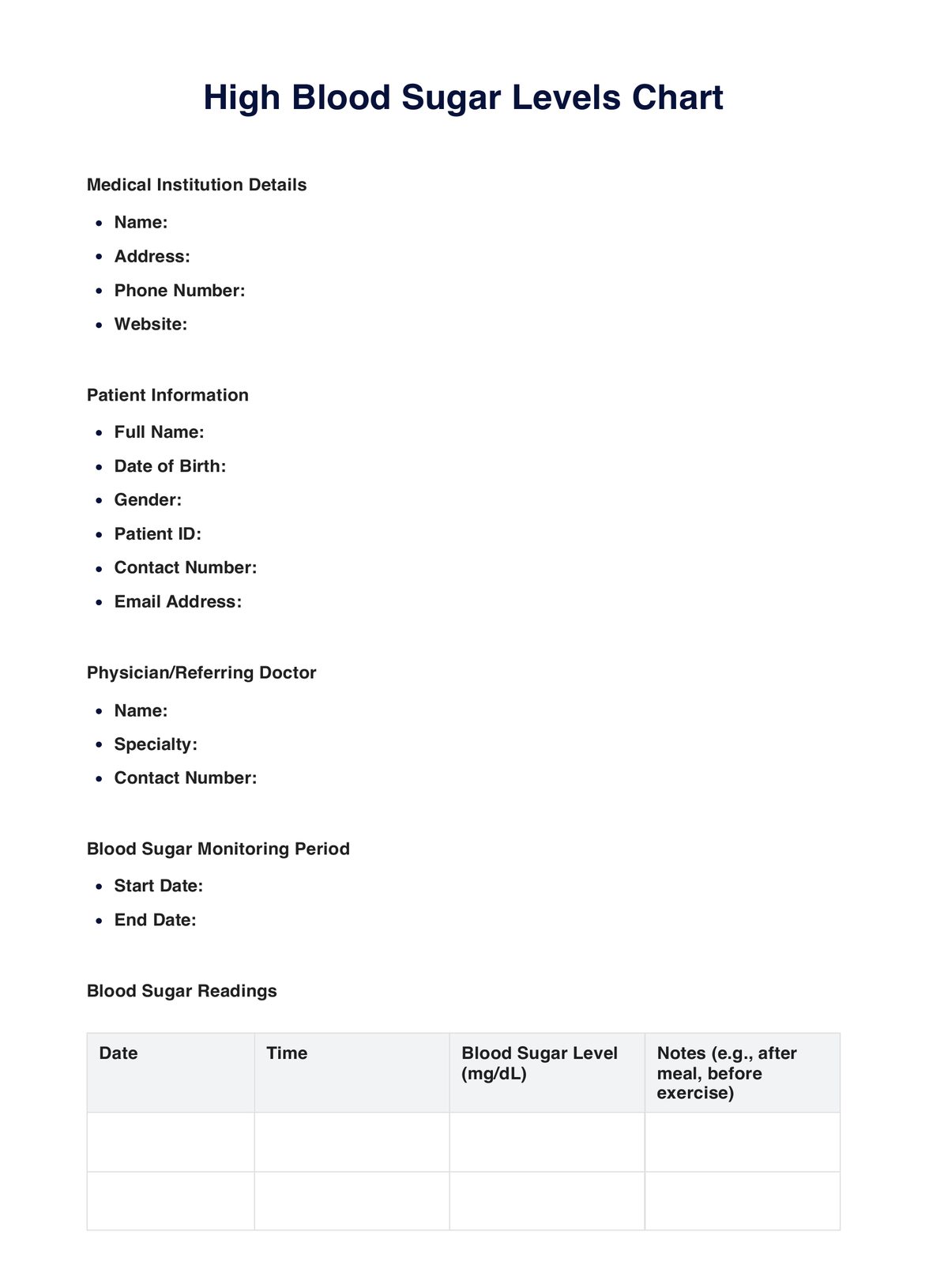Individuals diagnosed with or at risk of diabetes, as well as healthcare professionals managing patients with elevated blood sugar levels.

High Blood Sugar Levels
Track and manage elevated glucose with the High Blood Sugar Levels Chart. Essential for diabetes care and prevention. Download the chart now.
Use Template
High Blood Sugar Levels Template
Commonly asked questions
High Blood Sugar Levels Charts record and track blood sugar readings over time, helping to identify patterns and make informed treatment decisions.
The time varies based on individual needs, but daily entries typically take a few minutes. Regular reviews with healthcare professionals might take longer, depending on the discussions and interventions required.
EHR and practice management software
Get started for free
*No credit card required
Free
$0/usd
Unlimited clients
Telehealth
1GB of storage
Client portal text
Automated billing and online payments











